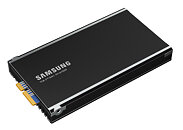
AMD Celebrates Four Decades of FPGA Innovation - From Invention to AI Acceleration
This year marks the 40th anniversary of the first commercially available field-programmable gate array (FPGA), introducing the idea of reprogrammable hardware. By creating "hardware as flexible as software," FPGA reprogrammable logic changed the face of semiconductor design. For the first time, developers could design a chip, and if specs or requirements changed mid-stream, or even after manufacturing, they could redefine its functionality to perform a different task. This flexibility enabled more rapid development of new chip designs, accelerating time to market for new products and providing an alternative to ASICs.
The impact on the market has been phenomenal. FPGAs launched a $10+ billion industry and over the past four decades we have shipped more than 3 billion FPGAs and adaptive SoCs (devices combining FPGA fabric with a system-on-chip and other processing engines) to more than 7,000 customers across diverse market segments. In fact, we've been the programmable logic market share leader for the past 25 consecutive years, and we believe we are well positioned for continued market leadership based on the strength of our product portfolio and roadmap.
The impact on the market has been phenomenal. FPGAs launched a $10+ billion industry and over the past four decades we have shipped more than 3 billion FPGAs and adaptive SoCs (devices combining FPGA fabric with a system-on-chip and other processing engines) to more than 7,000 customers across diverse market segments. In fact, we've been the programmable logic market share leader for the past 25 consecutive years, and we believe we are well positioned for continued market leadership based on the strength of our product portfolio and roadmap.
















































